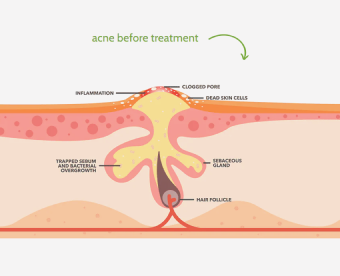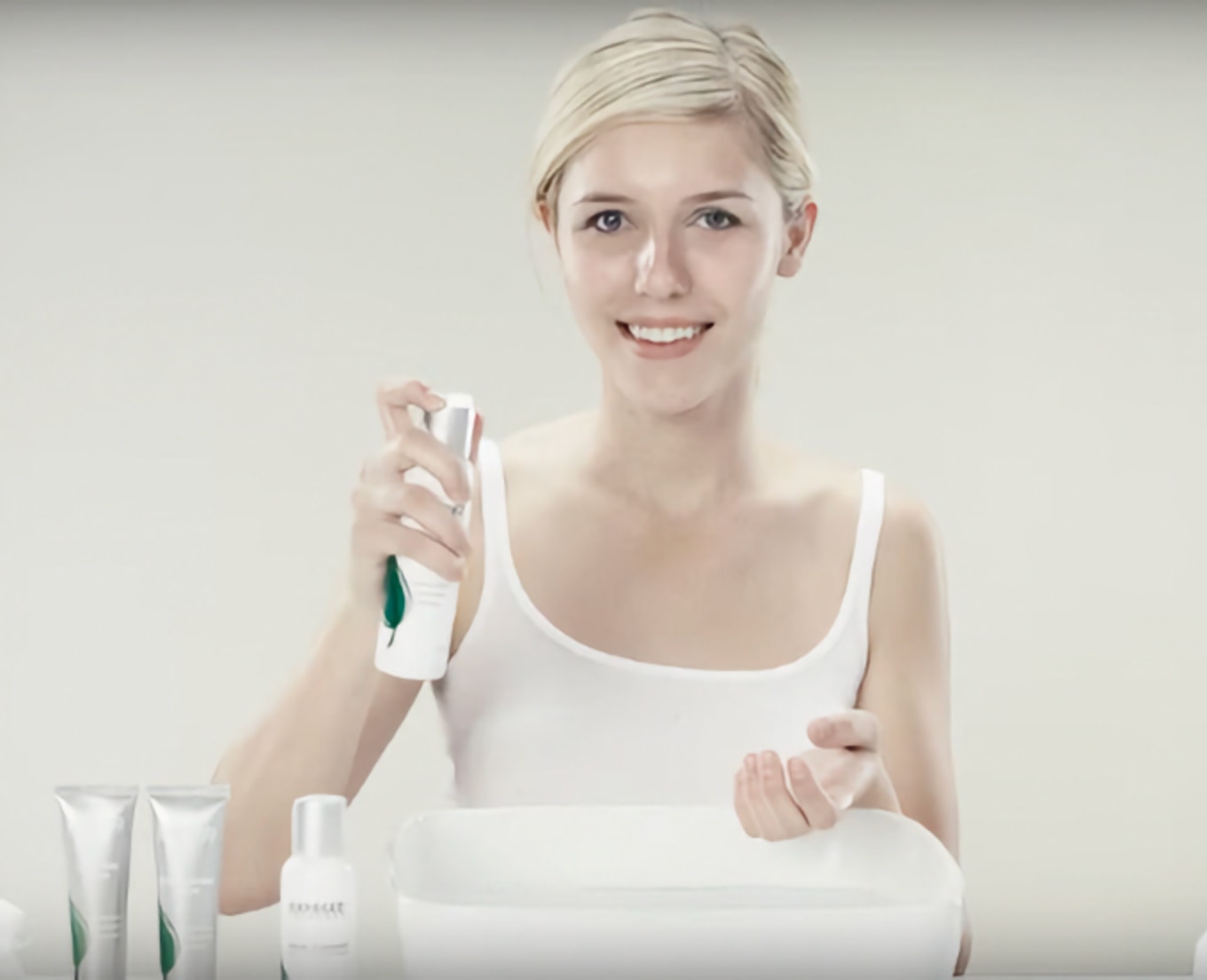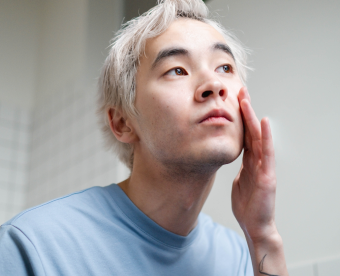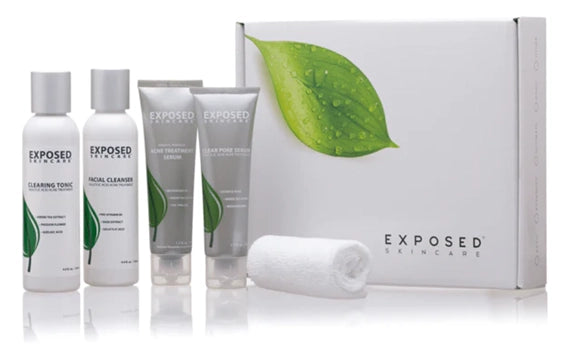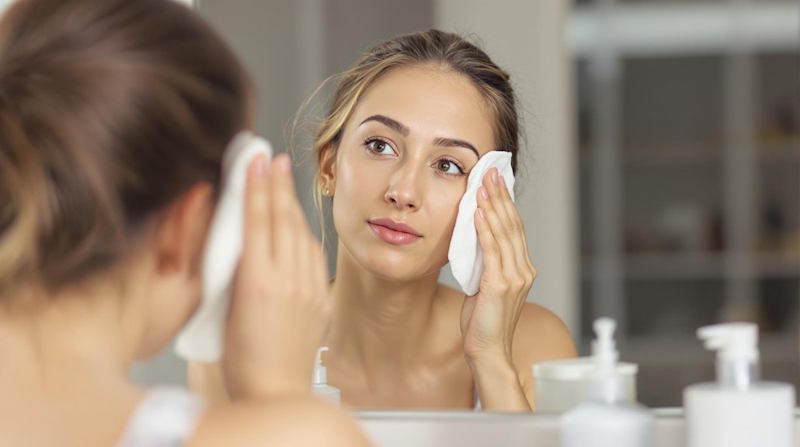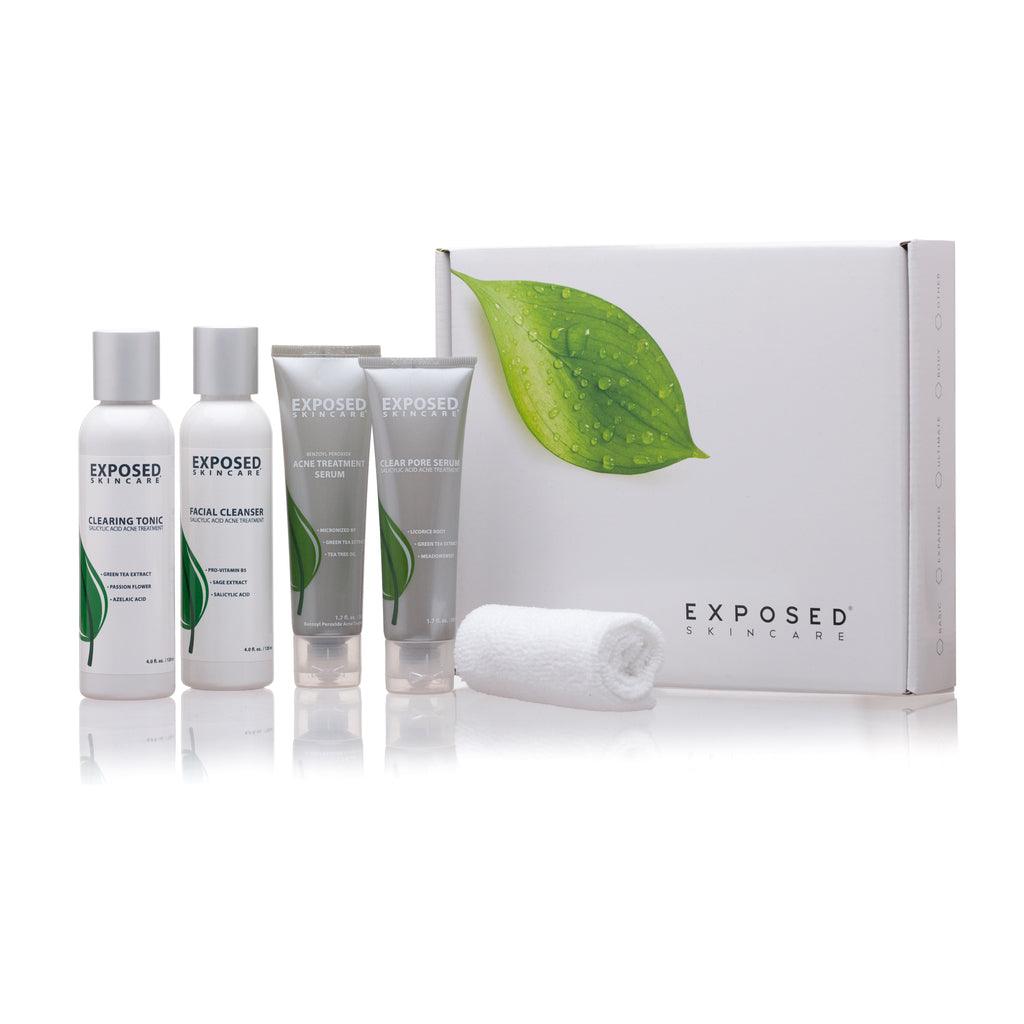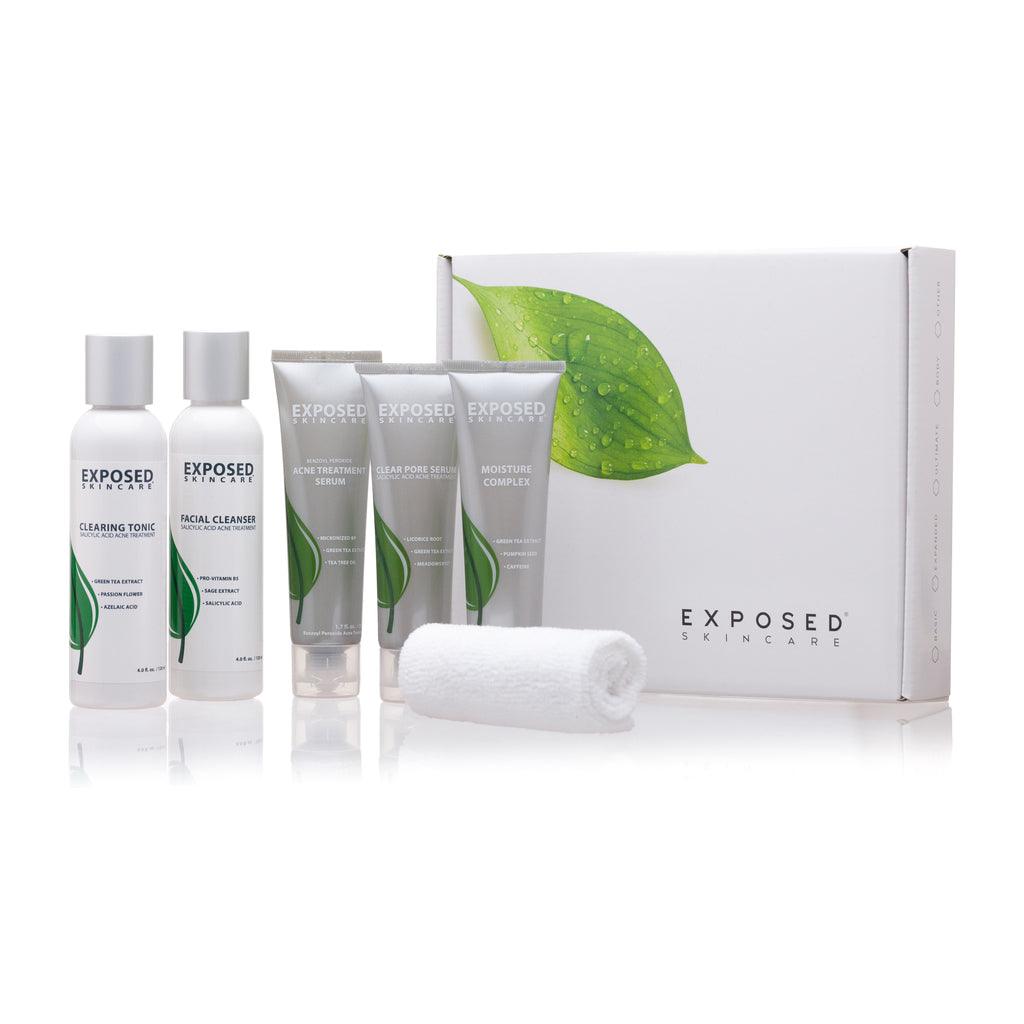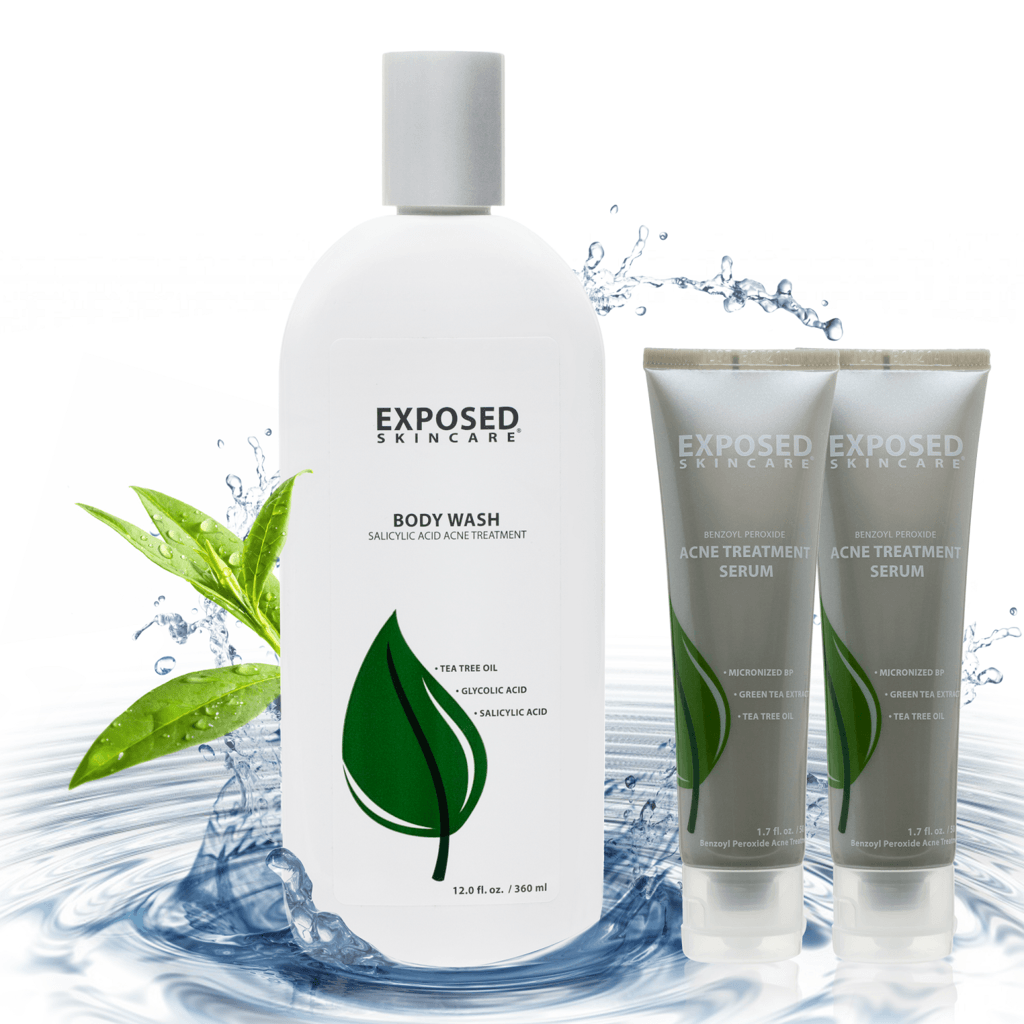Forehead acne springs from four culprits: excess oil, dead skin, bacteria, and inflammation. You're facing blackheads, whiteheads, papules, or deeper cysts—and single-ingredient fixes rarely cut it. Most people waste time with one-trick products when all-encompassing systems like Exposed target all four drivers at once. Their cleanser, toner, serum, and mask combo tackles stubborn forehead breakouts from every angle. Stick with it daily and you'll discover why that pesky forehead acne finally meets its match.
Biggest Takeaways
- Forehead acne results from hormones, excess oil, bacteria, and inflammation, often worsened by hair products.
- Common types include blackheads, whiteheads, papules, pustules, and deeper nodules or cysts.
- Single-ingredient treatments fail because they don't address all four primary acne drivers simultaneously.
- Exposed's system treats multiple causes with cleansers containing salicylic acid and serums with benzoyl peroxide.
- A consistent routine using cleansers, toners, serums and masks is essential for effective forehead acne treatment.
What Causes Forehead Acne? Understanding the Four Major Drivers

While scrolling through TikTok, you've probably seen dozens of "miracle cures" for that stubborn forehead acne—everything from toothpaste to weird DIY concoctions that sound more like salad dressing than skincare.
Here's the deal: forehead acne isn't just one thing. It's four major troublemakers working together. First, those hormone fluctuations (thanks, puberty and periods) trigger oil overload.
Then, that excess oil traps dead skin cells, clogging your pores faster than a traffic jam. Third, bacteria have a field day in this environment. Finally, inflammation hits, turning everything red and angry.
Excess oil and dead skin create the perfect storm, while bacteria party in your pores before inflammation crashes in.
Your fancy hair products aren't helping either—they're sliding down onto your forehead, creating what pros call "pomade acne."
Add stress, pollution, and spotty face-washing habits, and you've got the perfect recipe for forehead breakouts that just won't quit.
Types of Forehead Acne and Their Unique Characteristics
Now that you understand what's causing those frustrating forehead breakouts, let's get specific about what you're actually dealing with.
Your forehead might be hosting different acne types - from basic blackheads and whiteheads (those annoying clogged pores from oil and dead skin buildup) to the angrier red papules or pus-filled pustules when inflammation kicks in.
Some unlucky folks battle deeper issues like painful nodules or cysts lurking beneath the surface that can leave lasting scars.
And let's be real - even though forehead acne isn't technically worse than breakouts elsewhere, its front-and-center location makes it feel like everyone's staring at it.
Pair that visibility with triggers like hormones, hair products, and environmental junk, and you've got a perfect storm that needs more than just random TikTok hacks.
Why Most Single-Ingredient Solutions Fail to Clear Forehead Breakouts

Ever noticed how those "magic bullet" acne treatments promising to zap your forehead breakouts actually leave you right back where you started?
That's because forehead acne isn't a one-trick pony.
Those single-ingredient solutions you've been relying on? They're basically showing up to a four-alarm fire with just a cup of water.
Your forehead breakouts stem from multiple factors—hormones going haywire, pores getting clogged, oil production on overdrive, plus whatever your environment's throwing at you.
Using just benzoyl peroxide or salicylic acid alone is like trying to win a chess match with only pawns.
Your skin needs a strategy that tackles everything at once—oil control, exfoliation, bacteria-fighting, and soothing inflammation—because when one domino falls, the others follow suit.
Exposed's Complete System: Targeting All Four Acne Drivers Simultaneously
Instead of playing whack-a-mole with your forehead breakouts, Exposed's Complete System hits all four acne drivers at once—like bringing a SWAT team to take down your skin issues.
The system works because it's actually doing the full job, not half-measures. The Facial Cleanser's salicylic acid dives deep into pores while the Clearing Toner calms inflammation and balances your skin's pH (no more shiny forehead!).
Meanwhile, the Clear Pore Serum releases benzoyl peroxide to kill bacteria without turning your face into a desert. Top it off with the Clarifying Mask to suck up excess oil and dead skin cells, and you've got the whole package.
No more buying random products that address just one issue while ignoring the rest of what's causing those stubborn forehead pimples.
Real Results: How Exposed's Science-Plus-Nature Approach Clears Stubborn Forehead Acne

Talk is cheap, but results speak volumes. When 98% of users report clearer skin within 60 days, you know something's working. Exposed isn't just another over-hyped acne "miracle" – it's a system that actually delivers.
The secret? While other brands are selling you single-ingredient quick fixes that fizzle out, Exposed hits forehead acne from all angles. Their three-step system combines lab-tested heavyweights like salicylic acid and benzoyl peroxide with soothing naturals like tea tree and aloe.
Your forehead's oil slick meets its match with ingredients that unclog, calm, and prevent – without turning your skin into a desert.
And that one-year guarantee? It's not just marketing fluff. It's the confidence of a brand that knows their stuff works.
Creating Your Daily Forehead Acne-Fighting Routine With Exposed Skin Care
Building a forehead acne routine shouldn't feel like decoding ancient hieroglyphics, yet most skincare advice leaves you more confused than when you started.
Ditch the guesswork with Exposed's four-step attack plan. Start with their Facial Cleanser—it's packed with salicylic acid that unclogs pores without turning your skin into the Sahara.
Next, swipe on the Clearing Toner to mop up lingering gunk and calm angry skin.
The Clear Pore Serum is your heavy hitter, using benzoyl peroxide to kill acne bacteria that party on your forehead.
Twice weekly, treat yourself to the Clarifying Mask—it sucks up excess oil like a vacuum.
Stick with it daily—seriously, consistency is everything. This isn't just hype; Exposed's 98% success rate speaks for itself.
Frequently Asked Questions
How to Cover up Acne on the Forehead?
Use a non-comedogenic concealer with green tint to neutralize redness. Apply with clean brushes, then set with powder. For lasting results, try Exposed's system to clear your forehead completely.
What Is Forehead Acne Telling You?
Your forehead's telling you multiple factors are at play: excess oil, clogged pores, bacteria, and inflammation. You'll need more than just spot treatments to achieve lasting clearance and healthy skin.
Why Am I Getting Really Bad Acne on My Forehead?
Your forehead has become a battlefield of hormones, hair products, and hidden oils. You're likely experiencing clogged pores from excess sebum, bacteria, and inflammation—all four acne drivers that need simultaneous treatment.
Putting It All Together
You've tried pricey one-ingredient wonders that left your skin angry and your forehead still dotted with breakouts. Meanwhile, Exposed tackles all four acne causes at once without the drama. No magical overnight promises here—just science-backed formulas that actually work on stubborn forehead acne. Stick with spot treatments and hiding behind bangs, or finally address what's really happening under your skin. Your move.

